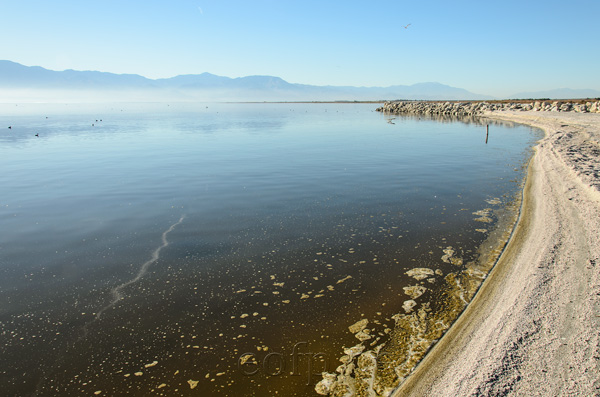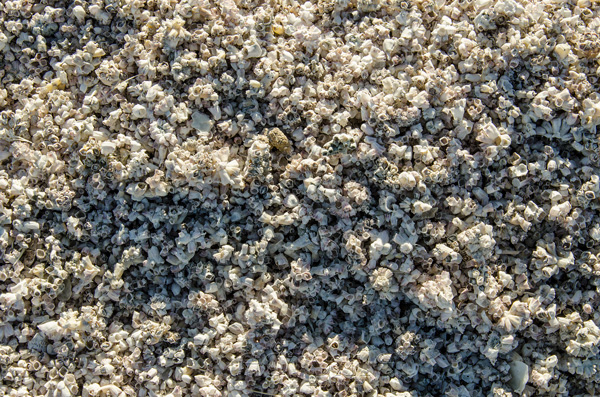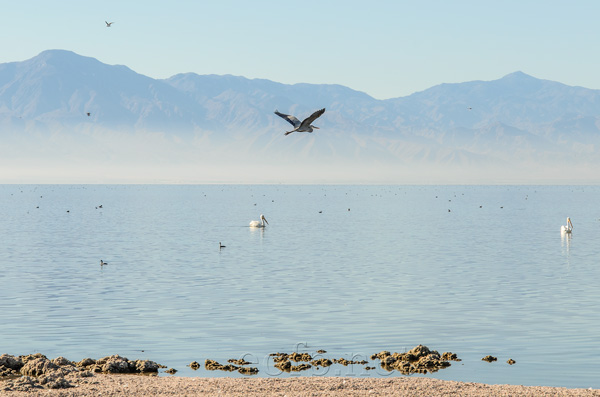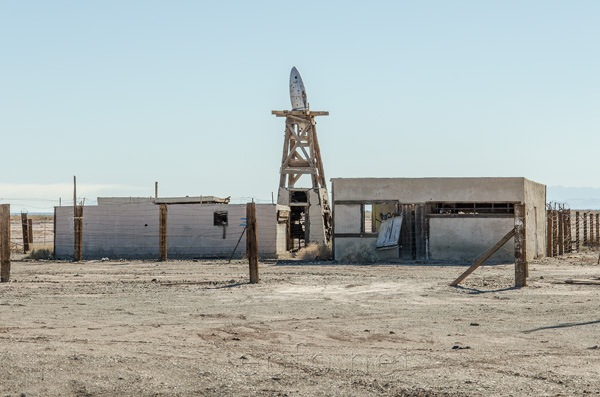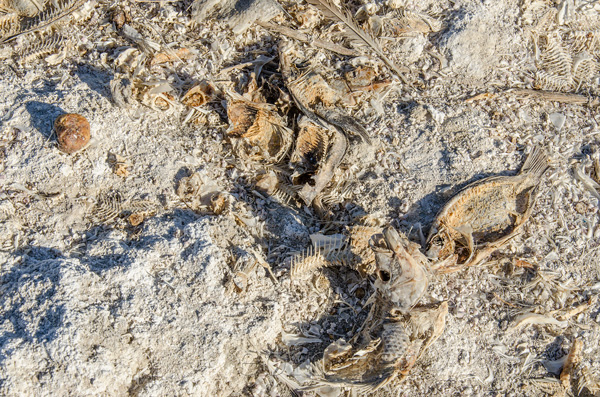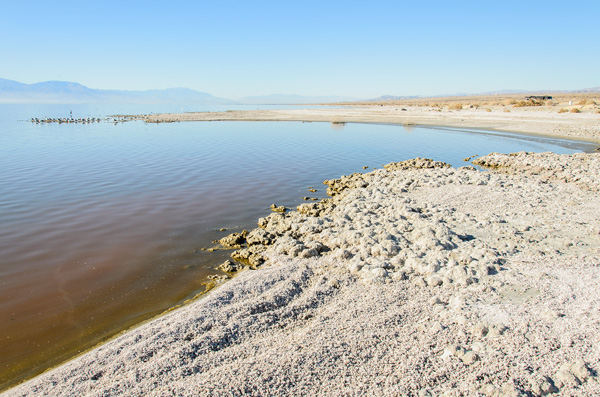9/27/2013
Salton Sea, California
Salton Sea, California
The Salton Sea is a bizarre, ever-changing and ongoing environmental calamity. This 362 square mile lake is the largest inland body of water in California and was created accidentally in 1905. Prior to 1905, the Salton Sea was a dry desert basin in lowest part of the Imperial Valley which was known as the Salton Sink. In 1900 the California Development Company began building a canal from the Colorado River to the Imperial Valley in California. The canal was built to bring irrigation water to the desolate valley in hopes of turning it into productive farmland. The canal immediately began having problems. It filled with silt and the head gates, dikes and other water control features were inadequate for the erratic flow of the Colorado. In 1905 the Colorado River flooded, over-ran the canal's water control structures and cut a new channel along the course of the canal into the Imperial Valley. For the next two years the entire flow of the Colorado River was diverted into the Imperial Valley and Salton Sink creating the Salton Sea. The Colorado River was returned to it's course within a few years but periodic flooding continued to add fresh water to the Salton Sea until the Hoover dam was built in 1935.
Salton Sea, California
The Salton Sea's drainage basin receives very little rainfall. So while some water naturally flows into the Salton Sea most of the water that flows into the sea drains from irrigated land in the Imperial and Coachella Valleys. The drainage into the Salton Sea has not been well managed historically and has varied wildly due to changes in water politics and the needs of water users in Southern California. In the 1970s the sea level rose and flooded many of the communities on it's shores. Recently the sea level has been falling rapidly. The Salton Sea has no outlet, so salts, agricultural chemicals, and other pollutants (sewage) that flow into the sea become more concentrated over time. This increasing concentration of salts and pollutants has killed all of the fish species that inhabited the sea shortly after it formed. In the 1950s the Salton Sea was developed and promoted as a tourist destination and was stocked with salt tolerant fish for sport fishing. Most of the fish species introduced in those efforts have also died off due to increasing salinity leaving only the the hardiest. Tilapia still survive in large numbers in the sea but suffer occasional massive die offs as the sea gets closer to being completely uninhabitable. In the late 1990s and early 2000s tens of millions of fish died in short spans of time leaving the beaches of the Salton Sea littered with dead fish for months. The crunching sound of bones underfoot is still a notable aspect of walking on Salton Sea beaches. In spite of its increasingly toxic waters, the Salton Sea is still a popular spot for birds.
Salton Sea, California
From the 1950s to the 1970s, several resort communities were developed on the shores of the Salton Sea. These communities still survive but none of them seem to be doing particularly well. The year-round warm climate and cheap land continue to attract retired people and others on fixed incomes. There are very few tourists though and not many sources of employment in the area. More water has been diverted away from the Salton Sea recently causing the sea's level to drop precipitously. If this trend continues the Salton Sea will eventually dry completely and expose the seabed for the first time in over a hundred years. There is mounting concern that if this happens, that concentrated pollutants on the dry seabed will be moved by dust storms to more populated areas like Los Angeles. This would be similar to the situation in Owens Dry Lake but on a much larger scale. The Salton Seabed is probably more toxic than the Owens Lake bed, however the winds around the Salton Sea aren't nearly as strong as those around Owens. The possibility of toxic dust storms darkening the skies over LA has politicians searching for a solution. Here's a good article about the problem at Wired.
Salton Sea, California
The shores of the Salton Sea are generally undeveloped and desolate. The trip all the way around the sea is about 115 miles. Highway 111 on the Southeastern side hugs the shore and passes through Niland, Bombay Beach and North Shore. Slab City is a few miles East of Niland. There are a few interesting parks and other places with Salton Sea access along 111. The Niland Marina at the end of Niland Marina road has a few scattered abandoned structures. Salt Creek Beach is a nice place to walk on the shore. The towns of Bombay Beach and North Shore both have small parks with shore access. There is a developed state park with a campground near North Shore. The Salton Sea is less accessible from highway 86 on the West side but Salton City (off of 86) is a pretty incredible place and has a few small parks on the shore. Salton City was the largest and most ambitious of the Salton Sea resort developments. Bombay Beach has has attracted the interest of documentary film makers and others.
More about the Salton Sea from the Salton Sea History Museum in North Shore.
Salton Sea, California
Salton Sea, California
All content on these pages Copyright Mark Hedlund 2012-2019. All rights reserved. Use in school projects and with links on social media is always okay. Please send me an email to request permission for any other use: hedlunch@yahoo.com Non-exclusive commercial publication rights for most photos is $25 per image.

